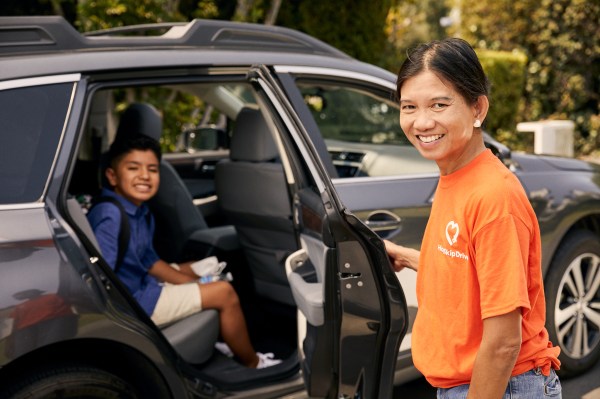Joanna McFarland got the idea for HopSkipDrive in 2014 because she needed a solution to a problem that many working parents like herself face: How do you consistently get your kids where they need to be on time?
The idea was sparked at a birthday party she attended with one of her children. The topic of moving kids around came up and every mom there had their own story of a situation where they felt they had to let their child down because they had no way to get them to whatever the destination was.
McFarland launched HopSkipDrive with Carolyn Yashari Becher and Janelle McGlothlin — the three have eight kids among them — as a way to try to safely tackle this issue by hiring safe third-party drivers to get their kids around.
HopSkipDrive didn’t know at the time that it was entering a space where there would soon be quite a few startups raising venture capital to try to tackle the problem, too. Newton, Massachusetts-based Sheprd looked to solve the problem by carting kiddos around in tricked-out Land Rovers equipped with snacks and iPads. Los Angeles-based Shuddle looked to be more of an Uber for kids by offering on-demand rides.
Many of those startups have since gone out of business. HopSkipDrive hasn’t. Why? Because an early pivot away from just focusing on parents as the sole customers opened up a new revenue stream and set the company up to progress past many of the companies that failed.
The Los Angeles-based startup just raised a $37 million Series D round from investors including Energy Impact Partners, Keyframe Capital and FirstMark Capital, among others. TechCrunch decided to pop in and chat with HopSkipDrive about how the company was able to navigate its pivot to become one of the leaders in the kids transportation category.
After the startup launched in 2014, McFarland said HopSkipDrive started to get a lot of inbound interest from a potential not-so-surprising customer: schools.
McFarland said that schools were reaching out to them because they needed a solution for students who weren’t a good fit for traditional bus routes. This included students who weren’t always coming from the same location, including children in the foster care system or who were experiencing homelessness.
“Students in foster care have the right to stay at their school of origin,” McFarland said. “That kid is experiencing a lot of instability and there is no way to reroute a bus overnight. That might take up to two to three weeks and not many other kids on the route. A 72-passenger bus does not make sense for one student, but HopSkipDrive can get that kid to school.”
The startup now works with more than 16,000 schools and has helped facilitate more than 1 million rides for students. It’s worth noting that all of these schools are located in seven states including California, Colorado and Pennsylvania, among others.
Students using HopSkipDrive to get to and from school have also helped pull more customers over to the consumer business, which the company still runs and is growing organically, McFarland said.
McFarland also credits some of the company’s success thus far to the fact that HopSkipDrive was able to learn directly what not to do from a former competitor that shut down, Shuddle. HopSkipDrive acquired the assets for the shuttered transportation startup after it went out of business in 2016.
“It was an opportunity to see how two different teams had approached the problem and the technology,” McFarland said. “We merged the platforms together and thought about how to take the best of both worlds and that really created a competitive advantage.”
HopSkipDrive’s pivot into working with school districts has allowed it to tap into a huge potential total addressable market. School transportation represents the largest mass transit system in the country, carting approximately 25 million students twice a day. Other startups like Zūm also aim to modernize the market.
“When we think about transportation holistically we can solve the bus driver problem for districts,” McFarland said. “There is no need to tell students they don’t have transportation anymore.”
